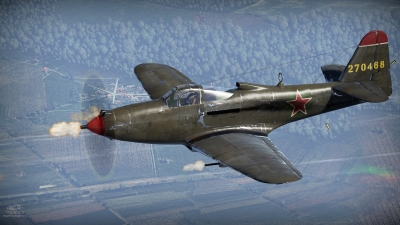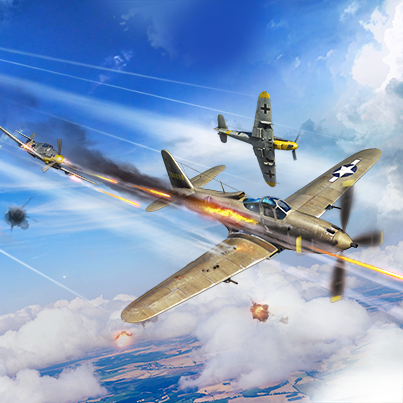
- For PC
- For MAC
- For Linux
- OS: Windows 10 (64 bit)
- Processor: Dual-Core 2.2 GHz
- Memory: 4GB
- Video Card: DirectX 11 level video card: AMD Radeon 77XX / NVIDIA GeForce GTX 660. The minimum supported resolution for the game is 720p.
- Network: Broadband Internet connection
- Hard Drive: 23.1 GB (Minimal client)
- OS: Windows 10/11 (64 bit)
- Processor: Intel Core i5 or Ryzen 5 3600 and better
- Memory: 16 GB and more
- Video Card: DirectX 11 level video card or higher and drivers: Nvidia GeForce 1060 and higher, Radeon RX 570 and higher
- Network: Broadband Internet connection
- Hard Drive: 75.9 GB (Full client)
- OS: Mac OS Big Sur 11.0 or newer
- Processor: Core i5, minimum 2.2GHz (Intel Xeon is not supported)
- Memory: 6 GB
- Video Card: Intel Iris Pro 5200 (Mac), or analog from AMD/Nvidia for Mac. Minimum supported resolution for the game is 720p with Metal support.
- Network: Broadband Internet connection
- Hard Drive: 22.1 GB (Minimal client)
- OS: Mac OS Big Sur 11.0 or newer
- Processor: Core i7 (Intel Xeon is not supported)
- Memory: 8 GB
- Video Card: Radeon Vega II or higher with Metal support.
- Network: Broadband Internet connection
- Hard Drive: 62.2 GB (Full client)
- OS: Most modern 64bit Linux distributions
- Processor: Dual-Core 2.4 GHz
- Memory: 4 GB
- Video Card: NVIDIA 660 with latest proprietary drivers (not older than 6 months) / similar AMD with latest proprietary drivers (not older than 6 months; the minimum supported resolution for the game is 720p) with Vulkan support.
- Network: Broadband Internet connection
- Hard Drive: 22.1 GB (Minimal client)
- OS: Ubuntu 20.04 64bit
- Processor: Intel Core i7
- Memory: 16 GB
- Video Card: NVIDIA 1060 with latest proprietary drivers (not older than 6 months) / similar AMD (Radeon RX 570) with latest proprietary drivers (not older than 6 months) with Vulkan support.
- Network: Broadband Internet connection
- Hard Drive: 62.2 GB (Full client)
From January 31st 15:00 GMT until February 3rd 06:00 GMT:
While flying any P-39, P-63 or Bf 109 aircraft destroy 200/27/14 enemy aircraft
in AB/RB/SB modes respectively and obtain an exclusive
Soviet P-63А-10 Kingcobra premium fighter
and 120 000 Silver Lions!
The following aircraft take part in the event: P-39N-0, P-39N (Soviet) P-39Q-5, P-39K-1(Soviet), P-63-A-5, P-63-A-5 (Soviet), P-63A-10, P-63C-5, Bf.109E-1, Bf.109E-3, Bf.109F-1, Bf.109F-2, Bf.109F-4, Bf.109F-4/trop, , Bf.109G-2/trop, Bf.109G-6, Bf.109G-10 and Bf.109K-4
Also get x4 RP bonus for the first victory for each nation

The P-39 Airacobra is an American fighter constructed in the late 1930’s by Bell Corporation. According to the Air Force of US Army specification published in 1937 the military needed a high-altitude interceptor, fast, with a descent climb rate and heavily armed. The XP-39 model - “Airacobra” prototype - had its first flight on April 6th 1939. The aircraft had quite an unusual design - with the engine mounted in the rear (with the centre of mass being behind the pilot’s position) increased maneuverability and cockpit protection, but at the same time controlling the aircraft became somewhat unpredictable, the slightest mistake could cause a flat spin, thus even simple maneuvers required 100% concentration. The distinctive feature of most of the “Cobras” was the M4 37mm engine cannon - a powerful weapon but with poor ballistics and only 3 shots per second rate of fire. At first such a characteristics combination was not particularly appreciated by American pilots, who preferred trusted and stable machines with rapid-fire armament.
However the aircraft became quite useful on the Eastern Front. Soviet pilots liked the machine for it’s heavy armament, great visibility and despite the drawbacks, the “Cobras” were really maintenance-friendly.
The P-39 series developed into the P-63 Kingcobra. This aircraft was larger and heavier, tailplane and wingtip redesign improved aerodynamics and increased maximum speed. These aircraft were supplied to the USSR from 1944 and despite the agreement not to use them in battles against Germans as they were designed for the Asian theatre, the Soviets secretly replaced their aging Airacobras with the modern P-63’s.
.jpg) The main opponents of the” Cobras” were the German Bf 109 fighters F and G series. At the beginning of the war installing DВ-601Е and DВ-605А engines with up to 1450 h.p. allowed pilots to increase the speed of Bf’s in excess of 630 km/h, greater maneuverability in comparison with “Cobras” made them a very dangerous opponent. At the beginning of 1943 the new Bf 109 G-6 fighters arrived at the Eastern Front, they had much better armament - 2x13mm MG’s and MK 108 30mm nose mounted cannon. Thus the last advantage of the “Cobras” - impressive burst mass was gone.From that point Soviet pilots could only count on their own skill.
The main opponents of the” Cobras” were the German Bf 109 fighters F and G series. At the beginning of the war installing DВ-601Е and DВ-605А engines with up to 1450 h.p. allowed pilots to increase the speed of Bf’s in excess of 630 km/h, greater maneuverability in comparison with “Cobras” made them a very dangerous opponent. At the beginning of 1943 the new Bf 109 G-6 fighters arrived at the Eastern Front, they had much better armament - 2x13mm MG’s and MK 108 30mm nose mounted cannon. Thus the last advantage of the “Cobras” - impressive burst mass was gone.From that point Soviet pilots could only count on their own skill.
War Thunder Team





